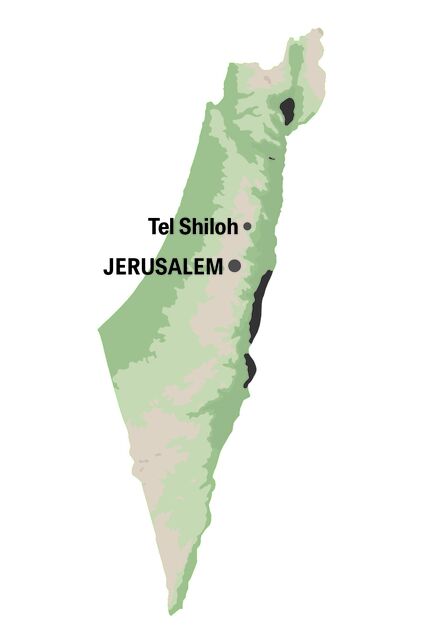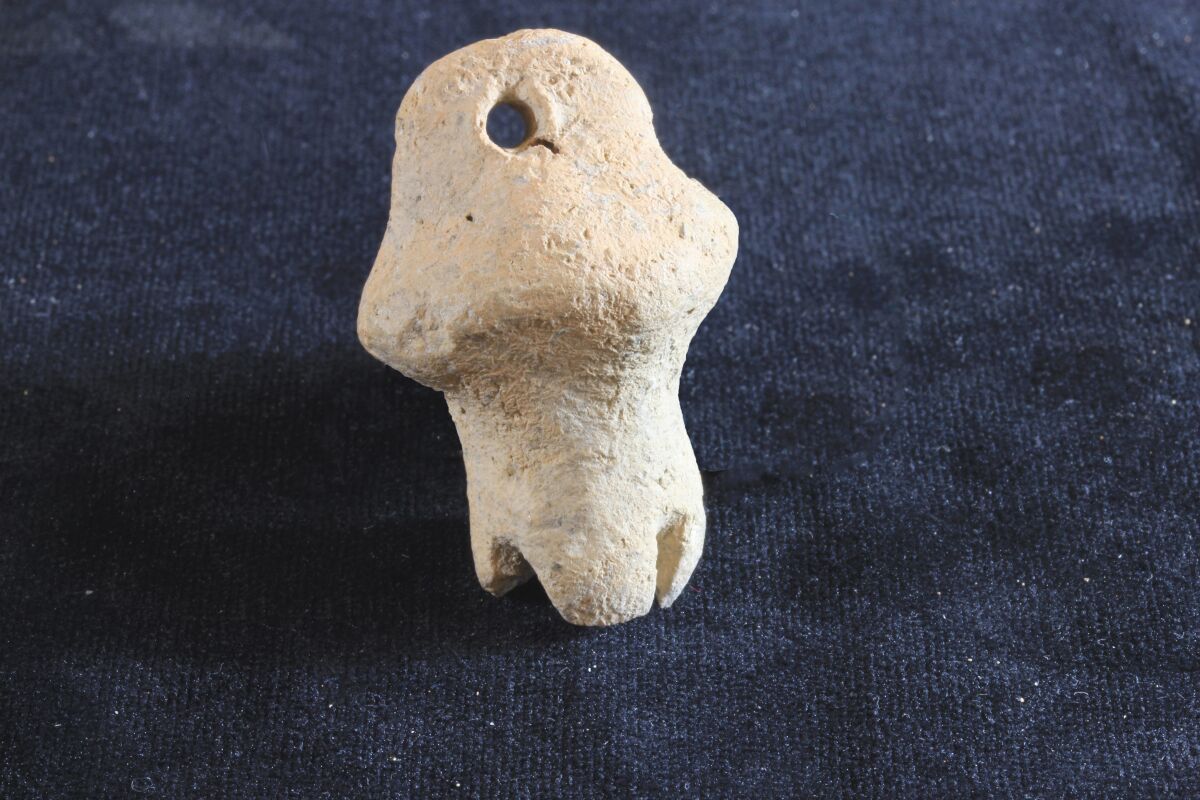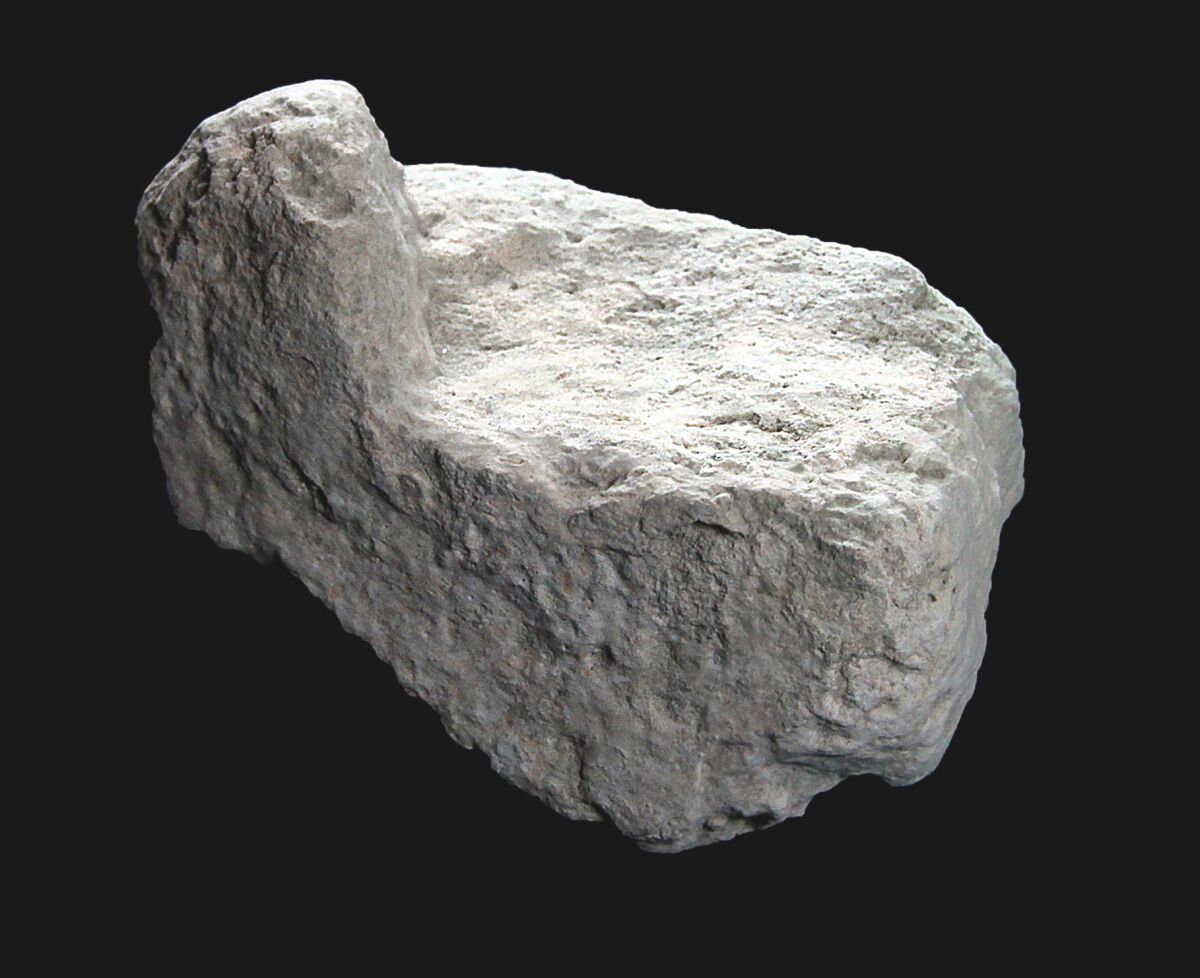Archaeologist Scott Stripling is the director of the Tel Shiloh excavations. Dr. Stripling and his team concluded the third season of digging last summer. In December, he met with aiba correspondent Brent Nagtegaal to discuss his important work in this biblically significant site.

Brent Nagtegaal Let’s begin by having you give us a snapshot of the biblical history of Shiloh.
Scott Stripling The chronology is that Joshua and the Israelites, according to Joshua 18:1, arrive at Shiloh around 1400–1399 b.c.e., maybe at the beginning of the 14th century. The biblical text says that the tabernacle is erected here at Shiloh and when you do the math, it is here for a little over three centuries.
Our excavations show that we have continuous occupation through that time period. We have also discovered evidence of a Philistine destruction layer. Then we have a reoccupation of the site. … Then we go through the second temple period with continuous occupation as well. We also have Byzantine and a little Islamic. So we have what we would call Middle Bronze ii, all the way through to the Islamic period.
BN This site had been heavily excavated prior to your excavations. What compelled you to dig again at Tel Shiloh?
SS Well, first of all, just behind us is where the Danish dug. 1922 is when they first broke ground. So, we are coming up on 100 years since Tel Shiloh was first excavated. They have joined back in with us; we have a Danish team working with us today.
The Danes did four seasons of excavation. But the methodology in the 1920s was quite primitive compared to ours, and they dug only a small section of the site. In the 1980s, Dr. Israel Finkelstein performed four seasons of excavations. The area he dug was also very limited. Between the Danes and Finkelstein, maybe 5 percent of the tel was dug. You really can’t interpret much based on 5 percent of the findings. That would be inconclusive. So we are connecting the work that the Danish did with the work that Finkelstein did, and opening up a broad area so that we are not subject to misinterpretation, hopefully.
BN How big is Tel Shiloh?
SS It is five acres inside the fortification wall …, which encircles the site with storage rooms all around.
BN Why did you choose to excavate in this northern edge?

SS There is great depth here. If you went … to the south a bit, it is very shallow. But here I could tell that there was a great depth and you could see where the outside of the wall was. I knew that we would get a really clear, undisturbed look at the historical profile. And this has proved to be true; we have a monumental Iron Age building here and then a Roman building next to it. Then we have the Iron Age i material next to it. And then the Bronze Age material next to it. So, we are able to see the entire panorama layer by layer.
BN What have you discovered from the time period when the tabernacle was here?
SS Several things. Number one: the storage rooms. Those storage rooms are full of storage jars from the period of the tabernacle. That fits the tabernacle culture because when people came here, they brought tithes and there had to be a place to store those. No other place in Israel has storage rooms all the way around. So that is unique to Shiloh. This is what I call verisimilitude.

This occurs when we read about it in the text, and then find material culture [evidence] that is consistent with the biblical text.
We also found a ceramic pomegranate, which is a motif of the tabernacle. You will remember that on the hem of the priests’ garments they had alternating bells and pomegranates. Examples of these have been found at a few sites in Israel, but only at priestly sites, or Levitical sites. This is a tabernacle motif. In Solomon’s temple there were also 200 pomegranates that adorned it.
BN Were you able to date this pomegranate?
SS We dated it to Iron i, which is the period of the tabernacle. Also, right near it this last season … we found three horns from a four-horned altar. That is also very significant, as the Bible says there was a sacrificial system at Shiloh …. So we have the horns from an altar, storage rooms from the tabernacle, and a massive quantity of animal bones. And those bones are only from the biblical sacrificial system.

BN How do we know that they are from Israel’s sacrificial system?
SS In the previous excavation in the ’80s, they uncovered … in Area D, a massive bone deposit. All the bones were zoologically studied and they were able to determine what percentage of the bones belonged to sheep, goat, cattle and so forth.
We have also discovered thousands of bones. Those have been studied and we know what animal they came from. We also know whether the bones are from the right side of the animal or from the left side. And we have a preponderance of bones from the right side of the animal; it varies from field to field, but about 60 percent of the bones are from the right side and 40 percent from the left side. It is impossible that that is a statistical anomaly. There has to be an explanation.
We can go to Leviticus 7 and see that the right side of the animal was the priests’ portion. And that is who is living here at Shiloh! The common population did not live here. They are coming here from all over, but it is the priests who are living here. Again, this is verisimilitude: We read it in the text and then we found material culture that is consistent with the biblical record.
BN And Dr. Finkelstein wasn’t aware of this when bone deposits were found in the ’80s?
SS Correct. Dr. Finkelstein did a good job recording what he found, and he even noted that more bones were from the right than from the left. He knew it, but he didn’t know how to interpret it. He doesn’t spend a lot of time reading the Bible. He had the data, but he didn’t register it. Now, in fairness, all archaeologists have different specialties and interests. Some know the Egyptian literature well, or the Ugaritic literature. And some are more familiar with the biblical record.
BN This definitely speaks to the value of using the Bible when excavating in the land of the Bible.
SS I think it is our go-to source in this part of the world. Shiloh is not mentioned in Egypt; it is not mentioned in Mesopotamia. It is only mentioned in the Bible, so that is our go-to source.
BN Every time I come here, I notice that we are surrounded by high peaks. And there is a wide valley to the west as well. Why do you think this location was originally chosen as an Israelite center of worship? There is no record of any Abrahamic or patriarchal event here. Why Shiloh?
SS There was already a city here: an Amorite city. This fortification wall was already here when the Israelites arrived. Remember, God had promised them, You are going to occupy cities that you did not build, and you will live in houses that you did not construct. When they come to Shiloh there was no battle. Just like at Shechem. At the end of Joshua 8, when they go to Shechem to renew the covenant, there is no conflict. The people from Shechem actually join the Israelites.
BN It is also important to note that Shiloh was in continual use. There is no destruction layer at the time when the Israelites arrived. Have you found any evidence indicating Shiloh was ever destroyed? At least partially?
SS There is a burn layer from a much earlier inhabitance. It appears there was a conflict perhaps hundreds of years before the Israelites arrived. We also have another burn layer, which is evidence of the Philistine destruction of Shiloh. This is very interesting because the Bible does not come right out and tell us that the Philistines destroyed Shiloh. It hints at it, however.
BN You make a great point. The Bible doesn’t contain all of the details we need to recover history. It contains many very important details, but it doesn’t record every detail. But you are saying that you have a date for the Philistine destruction of Shiloh?
SS There was a floor right here that we removed last summer. It was a plaster floor. For us, that is very important. We call it a sealed locus. This means that what is underneath this floor has not been disturbed, which allows us to be confident when we date it.
As we were excavating, I said that if there is a destruction layer under here and we can get carbon material, I predicted that it was going to date to 1075 b.c.e. … We did have a destruction layer and we were able to carbon date it. And it dated to 1060, plus or minus 30 years. Which is 1075, so we nailed it right on the spot. That synchronizes with the biblical dates, so once again you have your archaeology and the biblical record—verisimilitude.
BN So we have pomegranates, the horned altars, the sacrificial bones and the destruction layer, all of which align with the biblical narrative. Are there any other finds that are consistent with the Bible?
SS We also have a large monumental building from the period of the tabernacle. We will be excavating next season, and that will be very interesting.
BN How valuable is the biblical text when you excavate in a place like Shiloh?
SS It is very critical. Without knowledge of the biblical details—for example, Leviticus 7 mentioning that the priests consumed meat from the right side of the animal—how can we make sense of anomalies when we come across them? Even geographically, when [Edward] Robinson (1794–1853) identified this site he used the Bible. The Bible provided the specific geographic landmarks that showed this is Shiloh and led him to this place. Today nobody doubts that this was Shiloh.
BN When the media reports on archaeology in Israel there is often an anti-Bible bias. How do you deal with the anti-Bible bias now so prevalent in the media and elsewhere?
SS It is a challenge. We truly are apolitical. Some people probably won’t believe that, but if Palestinians were here we would be working cooperatively with them. If Jordanians were in charge, we would be working cooperatively with them. So, we have a great working relationship here with the community and the Antiquities Authority. But unfortunately, we are in the cross hairs. We are in Judea, Samaria, Area C, the West Bank.
Shiloh of all places is maybe the most important site in this area. I think we do a pretty good job of building bridges though, even with those that disagree with us. We are complementary of other archaeologists, or their work. I think we have to be able to disagree, to think outside the box, to welcome that sort of dialogue. It doesn’t bother me at all. I just want fair treatment, and most of the time we get it.
BN Do you believe the archaeological programs at Israel’s universities are sufficiently preparing students, future archaeologists, for excavating biblical sites? Is there enough of a focus on biblical archaeology?
SS You might get me in trouble with this question. I do think there should be more of an emphasis on biblical education. Of all places, it should be here. When I have spoken at universities in Israel, it has struck me how interested the students are in the biblical material that I bring up. And how unaware of it they are. So, I think there is room for improvement in this area.
But let me end on a positive by saying that we learn daily from our Israeli colleagues. I have with me today two Israeli staff members and we work with four of Israel’s main universities, so it is very interdisciplinary, high-tech material that we are doing.
I would like to conclude by inviting your readers to join us at Shiloh. All details can be found at www.digshiloh.org.
Text has been edited for clarity.

Sidebar: Biblical Shiloh
Situated roughly 25 miles directly north of Jerusalem, Shiloh was Israel’s political and religious center for about 300 years during the period of the judges. Before it was occupied by the Israelites in the early 14th century b.c.e., Shiloh belonged to the Canaanites and was a center for Canaanite religious worship.
Shiloh was one of the first cities inhabited by the Israelites when they moved into the Promised Land (Joshua 18). The city was the assembling point for the 12 tribes; from Shiloh, Joshua cast lots and divided the land for tribal inheritance. Shiloh was the center of Israel’s political and religious worship; the tabernacle was erected in Shiloh, and housed the ark of the covenant.
Judges 21 records that the Israelites traveled to Shiloh to keep the Feast of Tabernacles (Sukkot). Much of the history recorded in 1 Samuel unfolded in and around Shiloh, including Hannah’s fervent prayer beside the tabernacle during which she beseeched God for a child. Hannah’s son Samuel was raised in Shiloh and became one of Israel’s greatest prophets. 1 Samuel 4 records that the ark left Shiloh during the 11th century b.c.e. when it was captured by the Philistines during the battle of Aphek.
Excavations reveal that Shiloh was destroyed sometime in the 11th century b.c.e., most likely by the Philistines (perhaps following the battle of Aphek). The Prophet Jeremiah alluded to Shiloh’s extreme destruction almost 500 years later and used it as a warning of the coming destruction of Jerusalem (Jeremiah 7:12).

